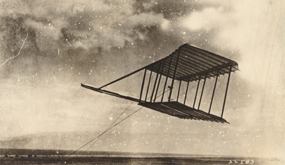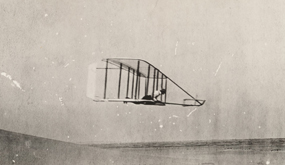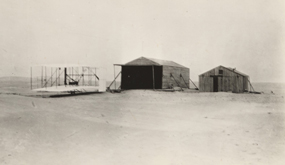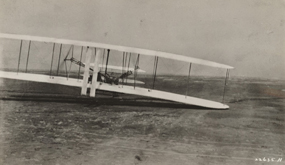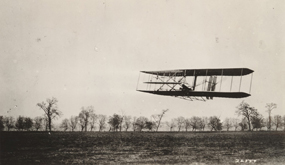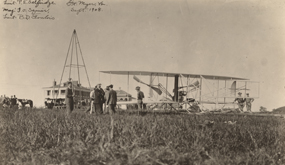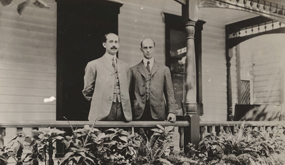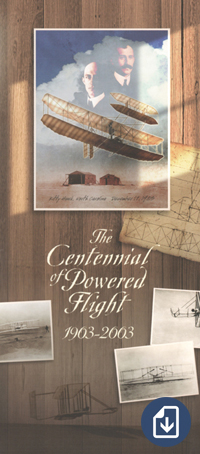 The Friends assisted the McDermott Library in funding an extensive exhibit on the history of the Wright brothers and the invention of the airplane.
The Friends assisted the McDermott Library in funding an extensive exhibit on the history of the Wright brothers and the invention of the airplane.
It was developed from a collection of 150 photographs of the Wright brothers' experiments donated to the Library by Mr. Fred L. Black. During the 1930s Mr. Black was the Director of the Henry Ford Museum, Dearborn, Michigan. He worked extensively with Orville Wright during the move of the Wright family home and bicycle work shop from Dayton, Ohio and re-assembly in the "Greenwood Village" at the Ford Museum. Orville loaned Mr. Black a series of the original negatives of the only photographic record of both the glider flights and the first powered flights.
In 1970, Mr. Black donated a set of the photographs to the Academy. The exhibit includes a selection of the photographs annotated with excerpts from the Wright brothers' letters, diaries, and lectures.

